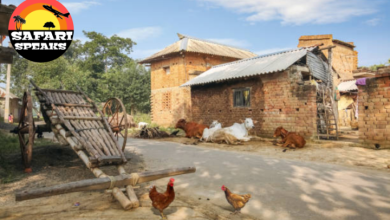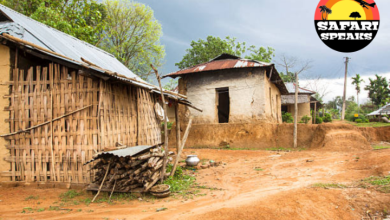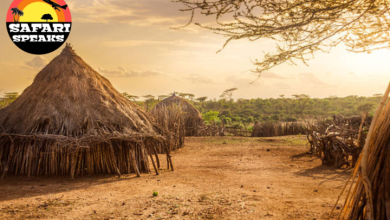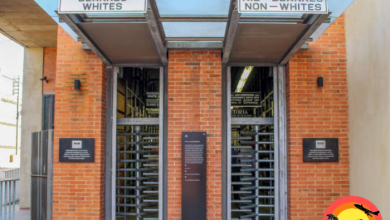Kenya Safari: Best Time To Visit Kenya Safari
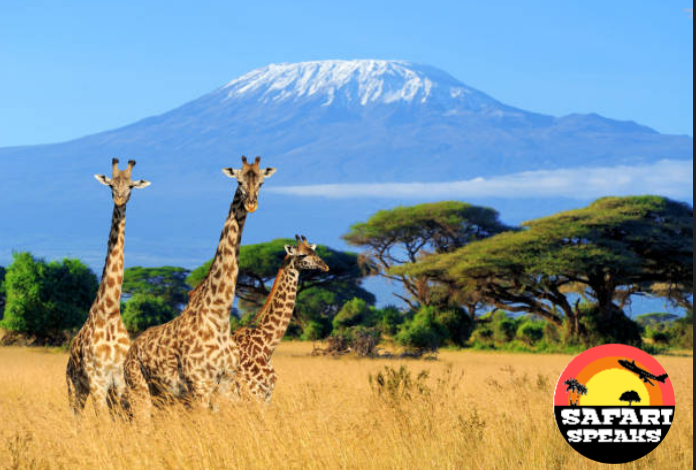
Best Time To Visit Kenya Safari is always when the country’s weather climate is good that the animals can be able to be sighted. There are times when the foreigners visit Kenya in order to be able to catch hold of the wild adventure that Kenya holds but the weather condition is not really favourable.
The word safari is Swahili for “travel,” and Kenya is where it all began. Great historical figures like Theodore Roosevelt and Ernest Hemingway immortalised this country. Kenya is now the most popular of the safari countries, with over 800,000 visitors per year. One of the best time to visit Kenya safari is discussed as followed if you follow this blog post very keenly. Kenya Safari is one of the best places that foreigners can actually have a good feel of nature especially the wild at its best.
Visitors to Kenya can enjoy game viewing, bird watching, hot-air ballooning, mountaineering, SCUBA diving, freshwater and deep sea fishing, and numerous other activities.
Kenya is well known for the magnificent Serengeti migration (shared with Tanzania) of more than one million wildebeest and zebra, and for the colorful Masai, Samburu and other tribes that contribute so much to making this a top safari destination.
Kenya has one of the most diversely majestic landscapes on the continent. The Great Rift Valley, with the steep walled valley floor dropping as much as 2000-3000 feet from the surrounding countryside, is more breathtakingly dramatic here than anywhere else in Africa.
The eastern and northern regions of the country are arid. Most of the population and economic production is in the south which is characterized by a plateau ranging in altitude from 3000-10,000 feet sloping down to Lake Victoria in the west and a coastal strip to the east. Over half the country is Christian, about 25 percent indigenous beliefs, and six percent Muslim concentrated along the coast. The Masai are found mainly to the west and south of Nairobi, the Kikuyu in the highlands around Nairobi, and the Samburu in the north.
Bantu and Nilotic peoples moved into the area before Arab traders arrived on the Kenyan coast by the first century A.D. The Swahili language was created out of a mixture of Bantu and Arabic and became the universal trading language. The Portuguese arrived in 1498 and took command of the coast, followed by the Omani in the 1600s and the British in the late nineteenth century. Kenya gained its independence within the Commonwealth from Britain on December 12, 1963. Key foreign exchange earners are tourism, coffee and tea.
Best Time To Visit Kenya Safari: Wildlife and Wildlife Areas
Kenya is one of the best countries on the continent for game viewing.It’s only drawback is that it is too popular. Many of the well-known parks are crowded, so don’t expect to be out there in the more popular parks on your own. Unfortunately, several vehicles are commonly seen surrounding a few lion, or even a sole rhino, cheetah or leopard. However, on the positive side, safaris are generally less expensive here than in Tanzania, Botswana or Zimbabwe. Richard Leaky, Director of National Parks and Wildlife, has instituted many positive changes which are reducing poaching and limiting the building of new lodges and camps in reserves.
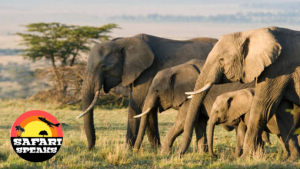
The Masai Mara is the best park in Kenya for game viewing, and should, if at all possible, be included in your itinerary unless you will be touring the Serengeti National Park in Tanzania at the times of the year when wildlife is more concentrated there. In general, game viewing is best during the dry seasons mid-December-March and July-early October. Game is easiest to spot in the Masai Mara, Amboseli and Nairobi National Parks, which have great wide-open plains. Samburu National Reserve is the country’s best northern reserve and is also excellent for game viewing.
The country is an ornithologist’s paradise with over 1000 species of birds recorded within its borders. Greater and lesser flamingos migrate along the Rift Valley and prefer the alkaline lakes of Magadi, Elmenteita, Nakuru, Bogoria or Turkana. Lakes Naivasha and Baringo are freshwater lakes. Bird watching is good year-round and excellent in the rainy season. Flying safaris are available to many of the parks and reserves. Camel safaris are operated in the north where guests walk down dry river beds or ride these “ships of the desert.”Visitors to Kenya should also consider visiting Tanzania’s northern parks, which include the Serengeti, Ngorongoro Crater, Lake Manyara and Arusha National Parks.
What Is Kenya Known Famous For?
Kenya is known and famous for a lot of things especially in good tourist attractions, agriculture (tea production) and some other notable facts. It is popular for its safari wild adventures that most foreigners are very much interested in. Nairobi is situated at about 6000 feet altitude and means “place of cool waters’ ‘ in the Maasai language. The availability of international-class accommodations and most western goods and services makes visiting here an enjoyable adventure.
The National Museum of Nairobi features the Leakey family’s paleoanthropological discoveries, botanical drawings of Joy Adamson, and taxidermy displays of wild animals that are good to study to help you identify the live game while on safari. Across from the museum is the Snake Park, exhibiting over 200 species of the well-loved reptilian family. The Municipal Market in the center of town on Market Street sells produce and curios (be sure to bargain). The Railroad Museum will be of interest to railroad enthusiasts. The Nairobi Race course has horse racing on Sunday afternoons (in season) and is highly recommended as a place for people watching and meeting a diverse cross section of Nairobians.
One of the more popular dining and disco spots is the Carnivore, famous for its beef and game meat. The Horseman, located in the suburb of Karen, is also excellent. Tamarind is known for excellent seafood. The Thorn Tree Cafe is a renowned meeting place for travelers on safari who leave messages on a bulletin board; it is one of the best spots in town for people-watching. Other excellent restaurants include Alan Bobbies’ Bistro and the Red Bull.

For tips on the best eating establishments in Kenya from the country’s leading expert, pick up a copy of Kathy Eldon’s Eating Out Guide To Kenya. Also look for Kathy’s Specialties Of The House featuring Kenya’s tastiest recipes. Other attractions include the Bomas of Kenya which features daily performances of ethnic dances and 16 varying styles of Kenyan homesteads. At the Giraffe Manor guests can feed the Rothschild’s giraffes from an elevated platform and learn more about them. The Karen Blixen Museum is interesting to visit.
Nairobi National Park
Nairobi National Park is only eight miles south of Nairobi and sporadically has an abundance of game (depending on the weather) including rhino (on our first visit we saw three), lion, cheetah , hippo and a variety of antelope – a bit of everything but elephants. There is something very strange about being in the midst of wild game and still within sight of a city’s skyline. Altitudes range from 4950-5850 feet above sea level. The animal Orphanage (a small zoo) near the main side park facing Nairobi is fenced. A four-wheel-drive vehicle is recommended in the rainy season.
Amboseli National Park
The real attraction of this park is the spectacular backdrop of Mt. Kilimanjaro. Also, rhino are fairly easy to locate here, and this may be the best park in Kenya to see elephant. Elephant Memories, a fascinating book by Cynthia Moss, is based primarily on her research in Amboseli.
This 146-square-mile park is probably the most crowded in the country, and a large portion of it has been turned into a dust bowl. However, elephants, lions and giraffes are easily found, and watching and photographing them as they pass in front of majestic Mt. Kilimanjaro is a sight to behold. The mountain seems so close; actually it is located in Tanzania, more than 30 miles from the park. Amboseli National Park is surrounded by a game reserve; the park and reserve together cover 1235 square miles and average about 3900 feet in altitude.
From Nairobi travel south across the Athi Plains inhabited by the Masai. One enters the park on a badly corrugated road from Namanga and passes Lake Amboseli (a salt pan), bone dry except in the rainy seasons, eastward across sparsely vegetated chalk flats to Ol Tukai. Mirages are common under the midday sun.
Approaching the center of the park, the barren landscape turns refreshingly green from springs and swamps fed by underground runoff from the overshadowing Mt. Kilimanjaro. These swamps provide water for nearby grasslands and acacia woodlands, attracting an abundance of game and waterfowl, which give life to an otherwise parched land.
Large herds of elephant and buffalo are often seen around the swamps, especially at Enkongo Narok Swamp where it is easy to obtain photos of animals (especially elephants) in the foreground and Mt. Kilimanjaro in the background. Early morning is best before Kilimanjaro is covered in clouds; the clouds may partially clear in late afternoon. However, there are days when the mountain remains completely covered in clouds.
Observation Hill is a good location for spotting lions and to get an overview of the park. One has a pretty good chance of spotting a lion, cheetah, giraffe, and impala. Wild dogs, aardwolf, oryx and gerenuk are less likely to be seen. Over 420 species of birds have been recorded. Game viewing is best mid-December-March (also best views of Kilimanjaro) and July-October. In order to limit destruction to the environment, driving off the roads is forbidden, and heavy fines are being levied against those who break the rules. Please do not ask your driver to leave the road for a closer look at wildlife. The park is about 140 miles from Nairobi.
Where To Stay In Kenya For Safari
ACCOMMODATION – Amboseli Lodge, Kilimanjaro Safari Lodge and park headquarters are located at Ol Tukai in the center of the park.
CLASS A/B: Amboseli Serena Lodge, located in the south of the park, is a modern lodge with 96 rooms with private facilities and swimming pool.
CLASS B: Amboseli Lodge has 60 rooms with facilities and a swimming pool. * Kilimanjaro Safari Lodge has rooms with ensuite facilities and a swimming pool.
CLASS D: Ol Tukai Lodge has self-service bandas.
CAMPING: Campsites are located outside the park on Masai land four miles past Observation Hill. No facilities except long-drop (pit) toilets. Bring your own water.
Tsavo West National Park
Halfway between Nairobi and Mombasa lie West and East Tsavo National Parks, which together total 8231 square miles. Large herds of over 100 elephants, with a total of over 15,000 in Tsavo West and East combined, over 60 species of mammals and 400 species of birds have been recorded. Also present are lion, caracal, giraffe, zebra, and a variety of antelope. Less game is usually seen here than in Amboseli National Park. However, the park’s rugged terrain is quite impressive in itself.
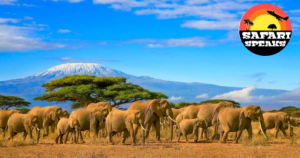
Tsavo West is predominately extensive semi arid plains broken by occasional granite outcrops. Lava fields are located near Kilaguni Lodge. Altitudes range from 1000 feet to nearly 6000 feet in the Ngulia Mountains in the northern region of the park. From the Mzima Springs’ underwater viewing platform, located just south of Kilaguni Lodge, visitors may be lucky enough to watch hippo swim about the clear waters with grace and ease. Crocs and numerous species of fish can also be seen. The best viewing is early in the morning. Kilaguni Lodge is about 180 miles from Nairobi.
Kenya Safari Lodges
ACCOMMODATION – CLASS B: Kilaguni Lodge has 50 rooms with facilities and a swimming pool. Ngulia Lodge has 52 rooms with ensuite facilities and swimming pool.
CLASS D: Ngulia Safari Camp is located near Ngulia Lodge and has self-service bandas. Kitani Lodge is located near Mzima Springs and has self-service bandas.
CAMPING: Campsites are available at Kitani, Kamboyo and Kangechwa, and at the following park gates: Mtito Andei, Ziwani, Chyulu (Kilaguni), Kasigau and Tsavo. Chyulu has showers and toilets; the other campsites have basic (if any) facilities.
ACCOMMODATION NEAR TSAVO NATIONAL PARK CLASS A: Taita Hills Lodge and Salt Lick Lodge are situated between the southern extensions of Tsavo East and West Parks, about 240 miles from Nairobi. Salt Lick Lodge, built on stilts to enhance viewing of wildlife visiting the salt lick, has 64 rooms with facilities ensuite and swimming pool. Taita Hills Lodge has 62 rooms with ensuite facilities and swimming pool.
Tsavo East National Park
Tsavo East is mostly arid bush dotted with rocky outcrops traversed by seasonal rivers lined with riverine forest. Tsavo East is generally hotter, dryer, and lies at a lower altitude (about 1000 feet) than its western counterpart. The 3000 square miles south of the Galana River is the main region open to the public. East Tsavo’s only permanent water hole is at Aruba Dam, and the drive from Voi makes for a good game run. Just north of the dam is an isolated hill, Mudanda Rock, another good spot for game. The scenic drive along the Galana River often produces sightings of hippos and crocs.
Tsavo East receives fewer visitors than Tsavo West; wildlife is generally more heavily concentrated in Tsavo West. Voi is about 210 miles from Nairobi.
Masai Mara National Reserve
This is the finest reserve in Kenya. All the big game is here: elephant, lion, leopard, cheetah and buffalo are prevalent, along with black rhino. Other commonly sighted species include zebra, wildebeest, Thomson’s gazelle, eland, and Masai giraffe. This is the only place in Kenya where topi are common. Masai Mara National Reserve, a northern extension of the Serengeti Plains (Tanzania), is located southwest of Nairobi and covers 590 square miles of open plains, acacia woodlands, and riverine forest along the banks on the Mara and Talek Rivers, which are home for many hippos, crocs and waterfowl.
One of the best places to look for game is in the Mara Triangle in the western part of the reserve, bounded by the Siria (Esoit Oloololo) Escarpment rising 1000 feet above the plains on the west, the Tanzanian border to the south and the Mara River to the east. A multitude of savannah animals can be found on these open grasslands. Lion are distributed throughout the park. Cheetah are most often seen on the short grass plains. Black rhino are most highly concentrated in the Olmisigiyoi Region in the center of the park, in the northwest and extreme east parts of the park; there are no rhino in the Mara Triangle.
The best time to visit is during the Serengeti migration from approximately mid/late-July to mid-September when great herds of wildebeest (1.4 million) and zebra (400,000) reside in the Mara and northern Tanzania before returning to Serengeti National Park. At this time prides of 40 or more lion may be seen. From the Serengeti of Tanzania, a major portion of the migration moves northwest toward Lake Victoria, then north across the Mara River into Kenya in search of grass, usually returning to Tanzania in mid-September/early October.
Over a period of three days during a recent visit, we saw wild-dog,five rhino, several lion, spotted hyena, a herd of 40 elephant and several smaller herds, buffalo, Masai giraffe, black-backed jackal, wildebeest, zebra, topi, and ostrich, among other species. In the Mara Triangle and the northwestern part of the park, four-wheel-drive vehicles are recommended. There are two flights a day from Nairobi servicing the park. Keekorok Lodge is located about 170 miles and the Mara Serena about 210 miles from Nairobi.
Fishing safaris by private air charter to Rusinga Island on Lake Victoria are available from all the camps.

